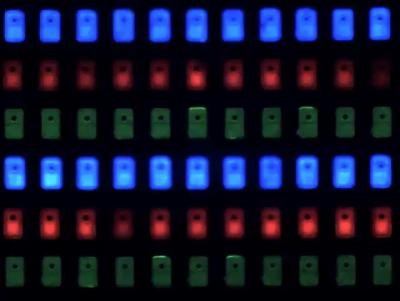Digitimes posted an interesting story, quoting PlayNitride's CEO that says that Micro-LED displays are easier to produce than people estimate. The company hopes to start mass producing such displays in the second half of 2017.

In PlayNitride's R&D setup, it takes about 10 seconds to transfer and place 200,000 LEDs - which means that a 5" panel will take only 10 minutes to produce. The yield rate at the company's setup is over 99%.
PlayNitride says that the cost of making a single smartphone panel could reach $300 - too expensive at this stage (although maybe not outrageously so, it is estimated that Apple's flexible OLEDs cost $120). Because of the high cost and high performance (efficiency, brightness and high PPI) PlayNitride aims to first enter the smartwatches, VR / AR, automotive and transparent display markets.
In April 2017 we posted that Samsung Display is set to acquire PlayNitride for around $150 million, but that deal did not materialize, it seems.
Comments
There is no way you are going to see any dead pixels unless you use a magnifying glass.
The legitimate knock against M-Leds are the thousands of splices used in the approach.
Weak links anound..
60000 dead pixels for FHD is easy to see. The spec for some applications is less than 10 dead pixels.
Pretty sure even with that many dead pixels, you won't see it. The pixels will just "spill over" to dead pixels achieving the appearance that it was filled. Many digital sensors have a lot of dead pixels (nonfunctional photo sites) but we just don't see them thanks to algorithms that help cover those issues.
Dead pixels on a sensor can be substituted, resulting in a very slight local loss of resolution only, that's why you can't see them. Dead pixels on a display show up as a black spot and are highly visible. You WILL see them.


1% of 6 million LEDs is a lot of dead pixels. repairing that much dead pixels will be very expensive with either redundancy solution or repair process. To achieve only 5 dead pixels, the yield should be 99.9999% that is a long way to go.